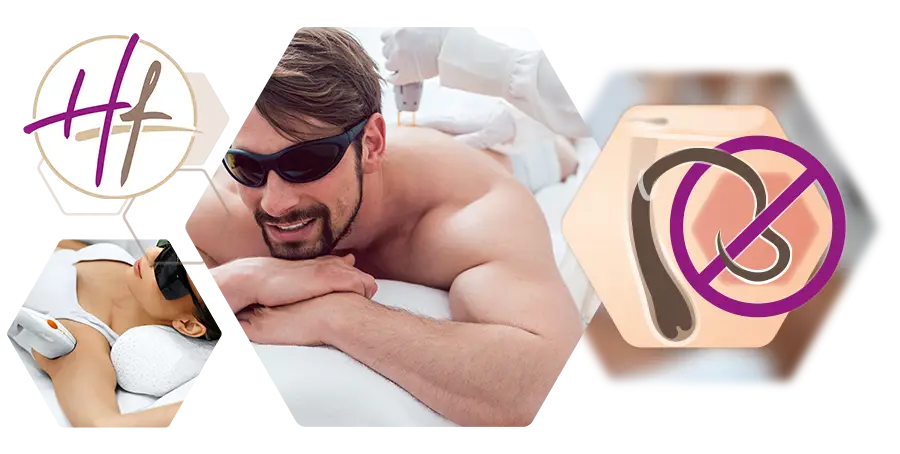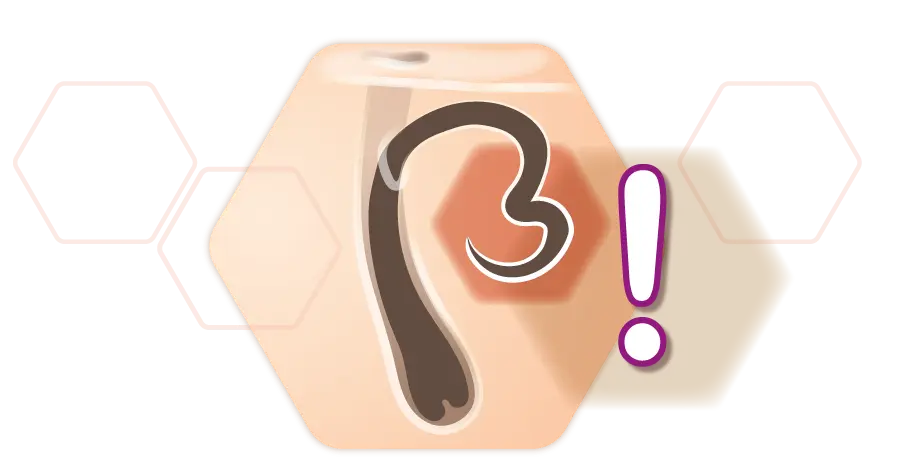
Ingrown and encapsulated hair:
Causes, consequences & prevention
ingrown hair can occur in many parts of the body,
these can be easily avoided
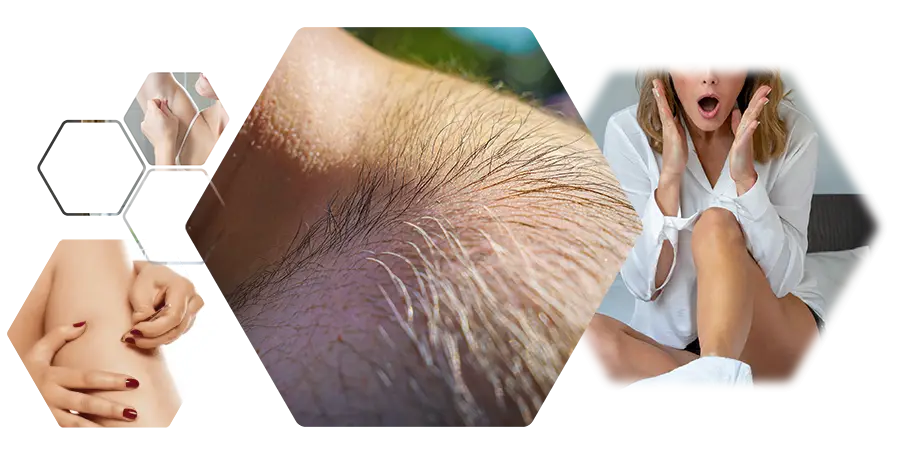
ingrown hair in women and men
Ingrown hair is a common problem that can affect both women and men. Tight-fitting clothing can promote the formation. If hair grows back under the skin, it can lead to irritation and discomfort. Proper care and regular peeling can help prevent ingrown hair and keep the skin smooth and healthy. But there is another way to permanently* prevent ingrown hair.

How exactly does an ingrown hair form?
Background information of encapsulated hair
Ingrown hair is a common annoyance that can occur when regrowing hair curves under the skin surface instead of growing out freely. This problem can occur in people with different hair types, thicknesses and directions, with some being at higher risk than others.
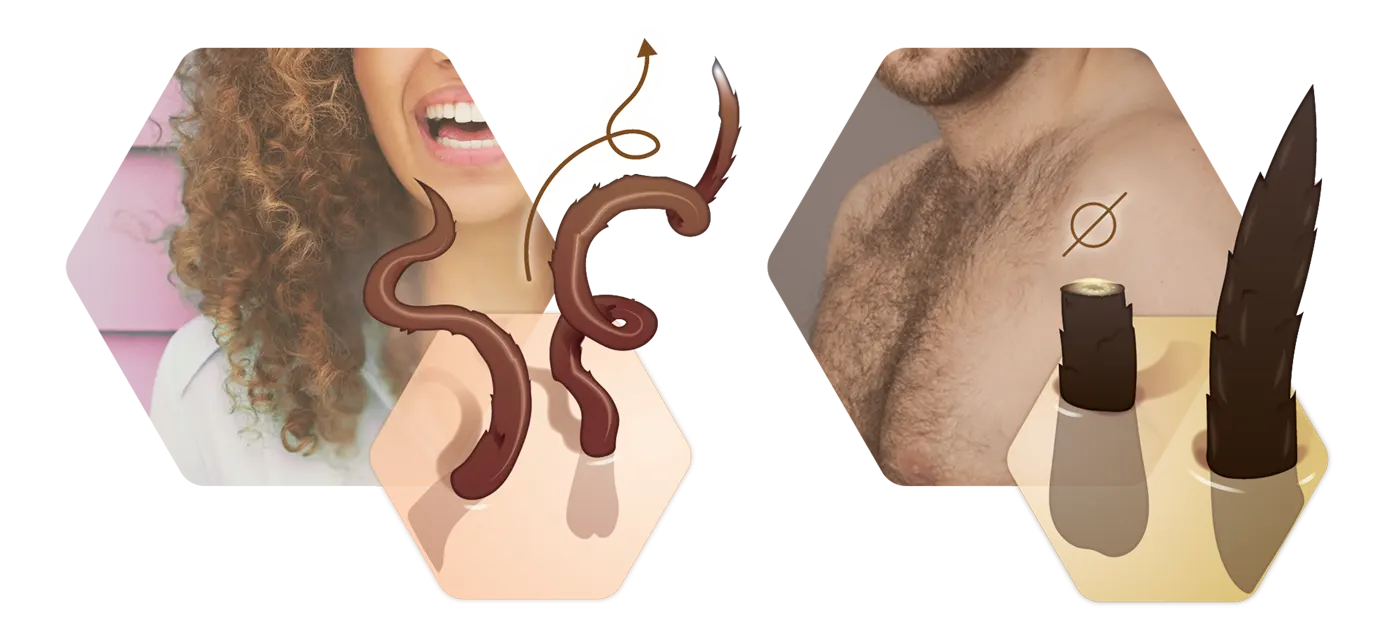
People with thick, curly or thick hair are particularly susceptible to ingrown hair. The reason for this is the structure of these hairs, which tends to get trapped more easily in the follicles and thus penetrate the skin. The result may be painful inflammations, skin irritations and unsightly skin discoloration.
The problems that can arise with ingrown hair
An ingrown hair can cause more than just discomfort. Because it can cause pain and inflammation, which is especially annoying when a pus pimple develops. This can not only be painful, but also severely affect the skin appearance. The affected area is often reddened and tender, which causes further discomfort.
Causes and forms of ingrown hair
The causes of ingrown hair can be very versatile. Skin and hair structure, genetic component, age and density of hair systems, as well as hormone balance are factors that influence hair growth and thus also the risk and frequency of ingrown hair. Regardless of this, 3 coarse variants of ingrown hair can be distinguished.
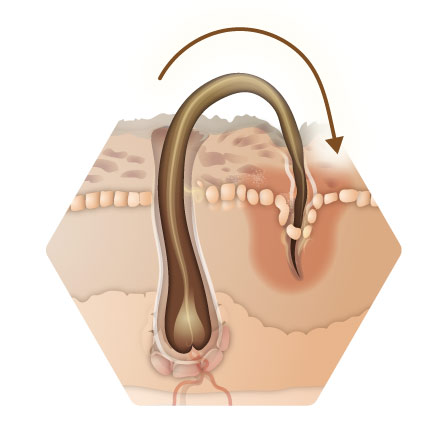
Hair turns back in skin
The hair grows normally out of the skin and gets trapped on the surface in e.g. skin scales or a hair channel of adjacent hair systems and grows into these. This type often occurs with tight-fitting clothing or under bandages/plaster because the hair grows pressed against the skin. In men, these ingrown hairs often occur on toe joints with tight shoes. This type of ingrown hair usually leads to too little complication and seldom to abscess formation, because with normal growth-related hair loss the hair is usually pulled out at the ingrown place, as the hair has a connection to the surface.
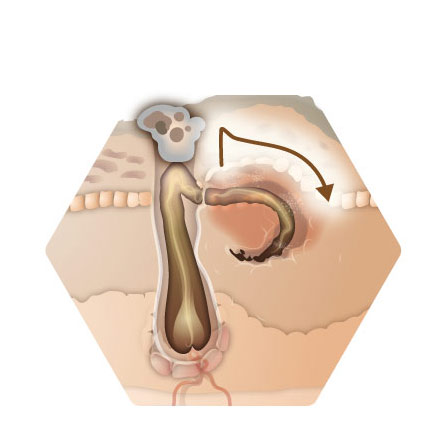
Hair canal is blocked
In this more complicated form of ingrown hair, the hair channel at the surface is clogged (e.g. by dirt particles, hardened sebum or wound crusts, etc.). The hair bends off as it grows and grows inwards into the skin. Once the hair has grown into the skin, removing the graft usually does not improve. Since the hair remains completely under the skin surface, it can also not fall out and hangs firmly. This means an increased potential for an abscess. This form of ingrown hair may be the result of wound healing or care routines. In rare cases, the clogging of the hair canals can also be caused by care products.
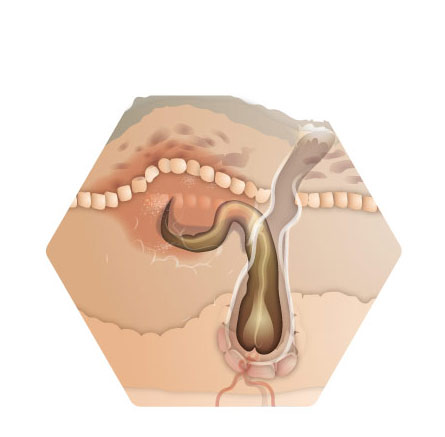
Hair grows out of the hair canal
Another form that leads to a more complicated type of ingrown hair is the growth of hair from the hair canal below the surface of the skin. The hair channel is bent or curved, so that a newly growing hair grows out of the guide into the surrounding tissue. In this species there is an increased potential for sepsis formation, as the incubation point can be very low. Places for the formation of ingrown hair of this form are usually places where the skin is moving a lot. This causes shifts in the skin, which in turn can cause the hair channels to become curved (e.g. armpits).
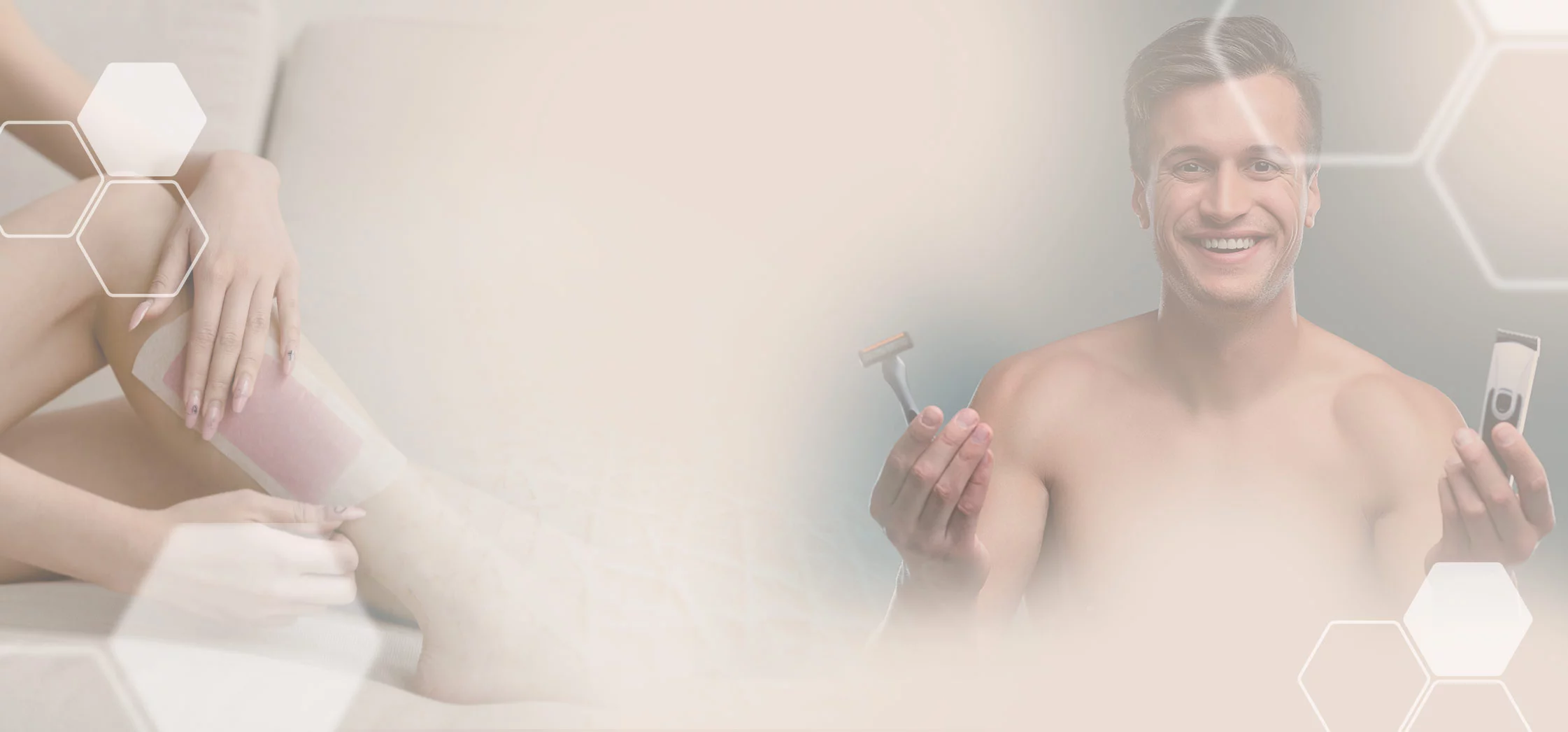
Hair removal and ingrown hair
By epilation, the hair is pulled out regularly as soon as it has formed again and has come out of the skin. This process occurs more often than it happens with natural hair loss. Each new hair that grows out of the hairline must push itself out of the skin along the line of the hair canal. This increases the chance that a newly growing hair will get stuck in the hair canal and grow into the tissue.
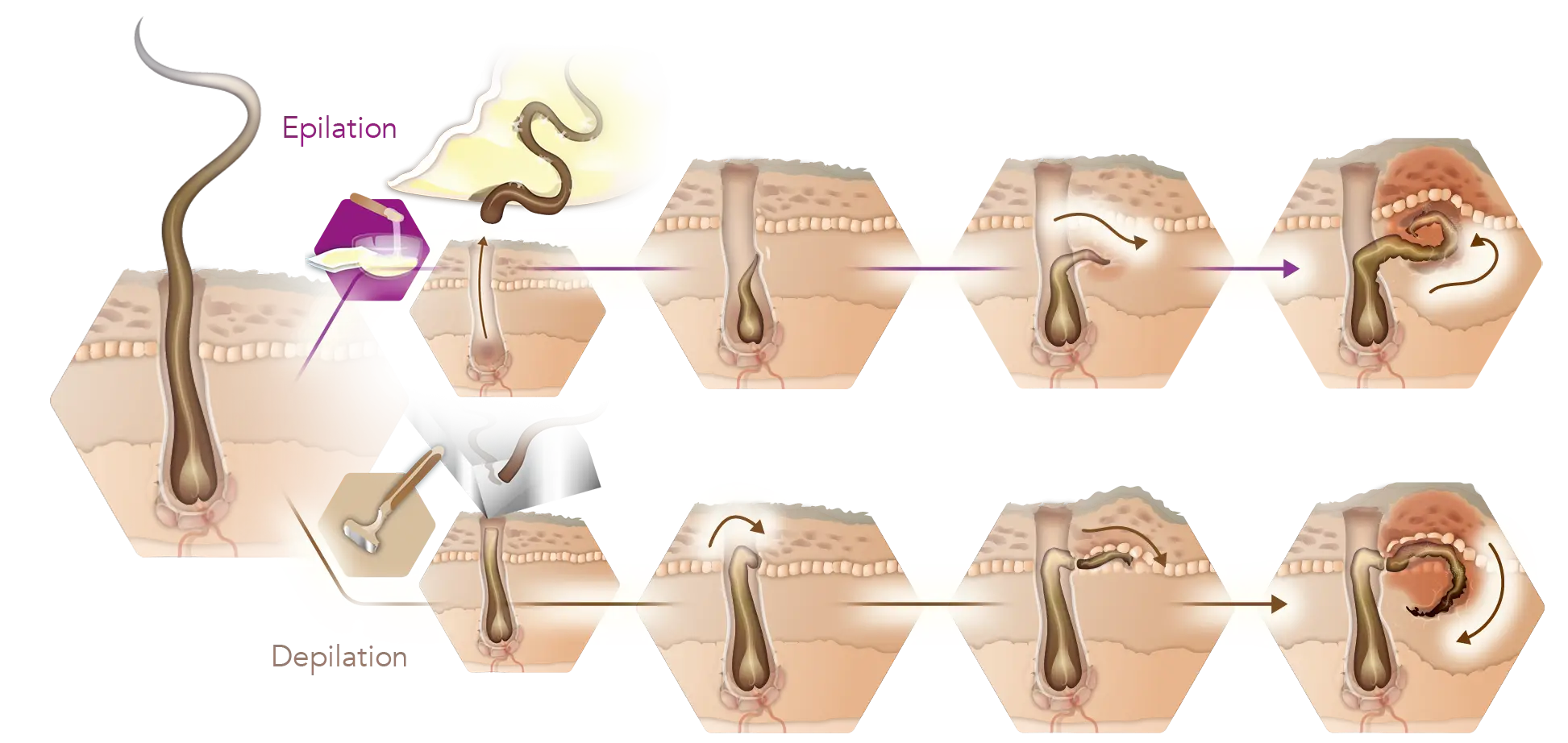
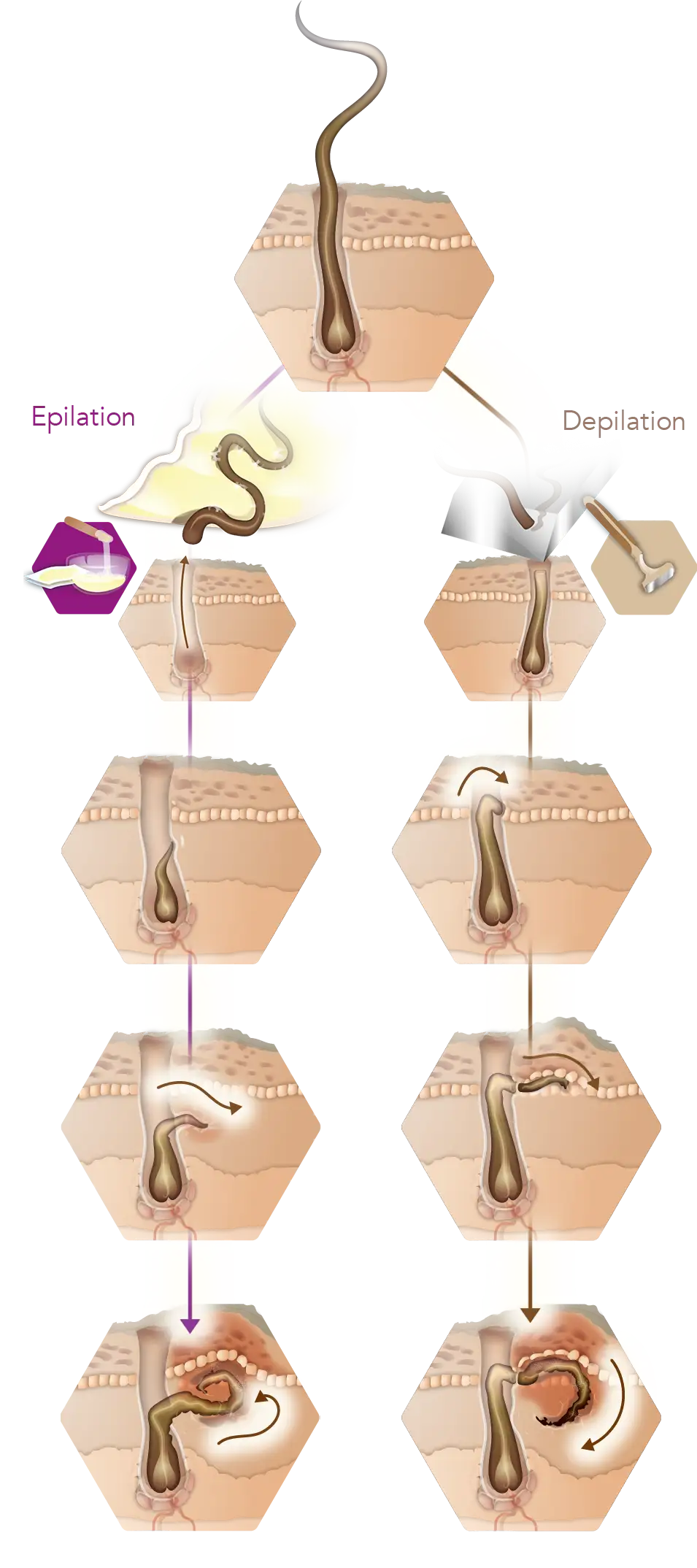
By depilation, such as shaving, the hair is regularly cut close to the skin. Due to the cutting process, the hair stump remaining in the hair canal can get a bend and subsequently grow into the skin. The shaving process can also cause sebum and dirt particles to be pushed or pressed into the hair canal with the blade, thus closing the hair canal on the surface.
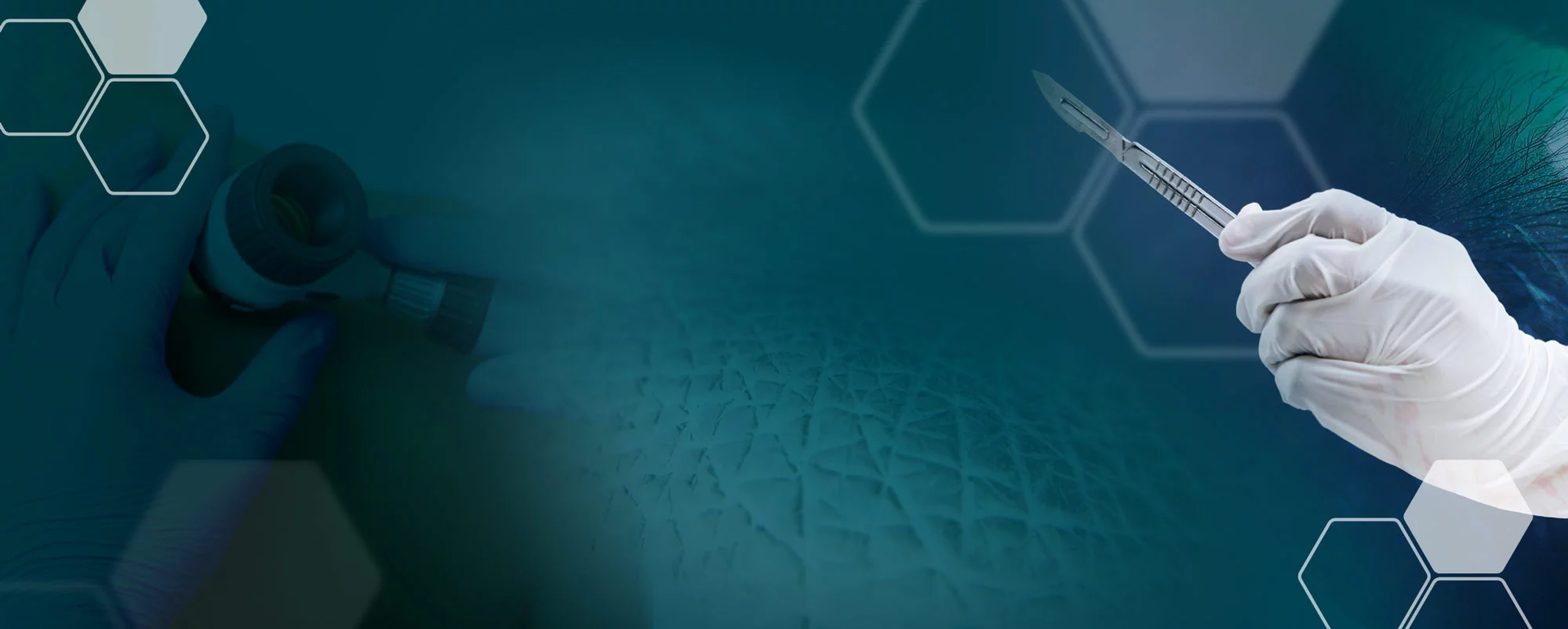
Skin abscesses due to ingrown hair
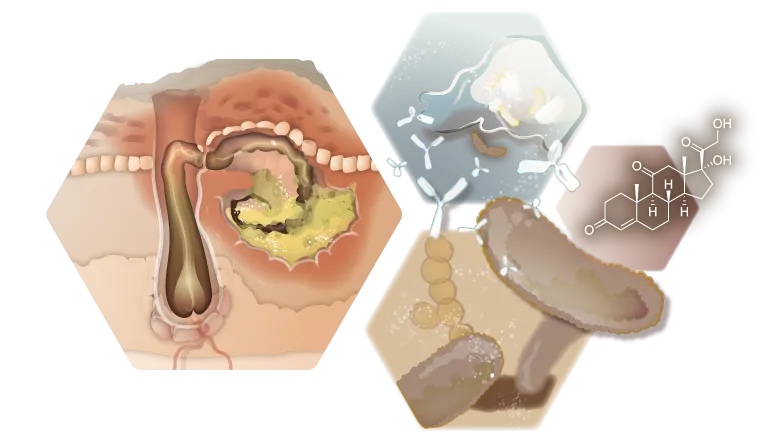
Cause of abscesses
Skin abscesses are painful, inflammatory accumulations of pus under the skin. The main cause is often a bacterial infection, which can be caused by hair follicle blockages and ingrown hair. Often harmless bacteria or fungi that otherwise live on the skin surface trigger an immune reaction. The germs get under the skin and into the tissue via the ingrown hair and are recognized and combated as foreign “invaders”. Dagger abscesses can dissolve on their own, but they can also strengthen themselves. Especially if aggressive and resilient staphylococci or streptococci play a role in abscess formation. The intestinal bacterium E. coli can also cause abscess formation in connection with cortisone secretion and thus cause a large-scale inflammation under the skin.
Consequence of an abscess
Unpleasant symptoms such as swelling, redness and even fever are the result. If larger abscesses remain untreated, they can burst and release pus. The consequences can be scarring and even systemic infections such as sepsis, in which the immune system overreacts and triggers end-inflammatory reactions throughout the body. Therefore, in order to prevent sepsis, surgical removal of the abscess and wound drainage, as well as antibiotic treatment are often performed.
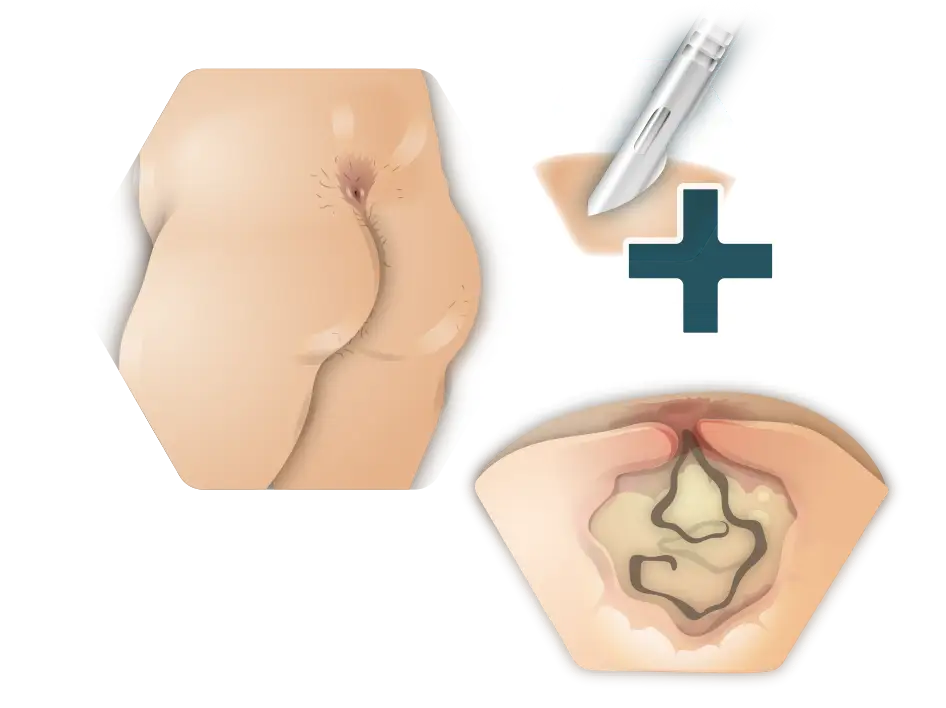
Coccyx fistua
A well-known example of an abscess is the crotch fistula, which occurs mainly in men. A crotch fistula, or sinus pilonidalis, is a painful disease directly at the top of the buttock/lower back, often caused by ingrown hairs that produce a pus blister. Most cases require surgical treatment in which the affected tissue is generously removed to prevent repeated infections and complications.
Cervical fistula is caused by a combination of factors. Clogged hair follicles, friction and pressure on the coccyx as well as genetic predispositions can play a role.This is why hygiene and hair removal in the buttocks are important for prevention.
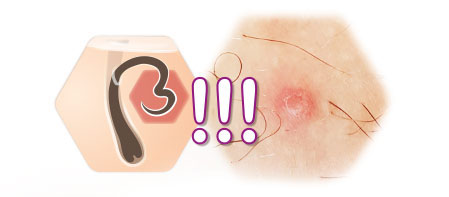
Where is ingrown hair particularly common?
Ingrown hair can occur in all parts of the body if hair does not grow properly out of the hair follicle after shaving, epilation or waxing. However, there are areas of the skin that are more likely to grow in the wrong direction:
Armpits
The annoying problem of ingrown hair affects men and women alike, especially in the armpit area. With constant shaving or waxing of sensitive skin, the hair may get stuck under the surface, which can lead to irritating consequences such as itching and swelling. Armpits cause a lot of movement of the skin through the arms due to natural processes. In addition, there is an increased number of hair follicles, which form strong hair.
Scalp and face
Frequently, ingrown hairs on the face occur. Head hair has a different growth cycle than other body hair. The phases until hair loss is much longer, the hair grows longer as well as stronger and denser than at most other parts of the body. This increases statistically the potential for hair-related abscess formation. In addition, in men, regular shaving may favor ingrown facial hair.
Intimate area
In the intimate area and the bikini zone, ingrown hair is a common problem that affects both women and men. The dense hair growth direction and sensitive skin in this area increase the risk. Hair removal can lead to ingrown hair, irritation and painful inflammation.
Legs
The curse of ingrown hair also extends to the legs. A nuisance that is particularly common among women. Many of them regularly resort to methods such as shaving or waxing to achieve smooth skin. However, the nature of the hair and the type of care play a decisive role in whether these unpleasant growths occur or not. Time to look for ways to get rid of this annoying problem.
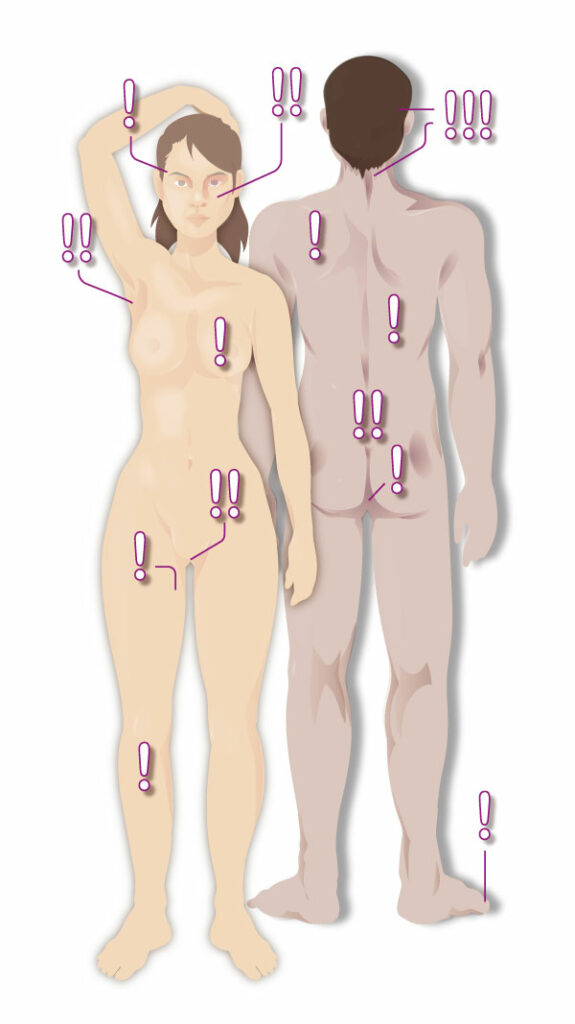
How can ingrown hair be prevented?
Care at home after shaving or waxing
Proper care is essential to avoid ingrown hair. Regular peeling and wearing loose clothing can help. In the case of already ingrown hair, you should avoid touching and pressing to prevent inflammation. This method may help in the short term, but it cannot prevent ingrown hairs. But there is a way to avoid them permanently.
Prevent ingrown hair permanently
Ingrown hair can be completely prevented with permanent hair removal with Haarfreiheit. Our professional service and state-of-the-art technology ensure that hair is effectively and permanently removed without growing into the skin. Unlike traditional methods such as shaving or waxing, where hair can easily break off and curl under the skin, the precise technique of permanent hair removal ensures smooth, hair-free skin.
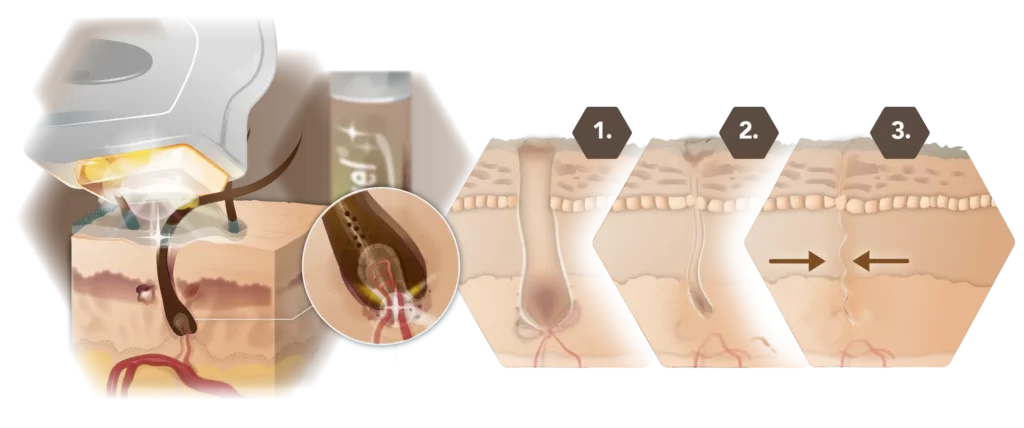
After the treatment with photoepilation, the hair canal remains empty because no hair can grow back. The hair channel closes over the period of a few weeks (1-3) due to cell growth of the skin.
Our modern technology and surpreme service
Haarfreiheit offers a wide range of advanced hair removal technologies that take into account almost every hair and skin type. Regardless of individual needs, the appropriate method can be applied to prevent ingrown hair. Our trained specialists ensure a relaxed and comfortable treatment process, during which you can take a well-deserved break from the hectic everyday life.
Enjoy the pleasant atmosphere and look forward to long-lasting smooth skin without having to worry about ingrown hair. Experience the carelessness and efficiency of hair removal with Haarfreiheit. On our pages you will learn many more details about the different technologies for hair removal with light or laser.
